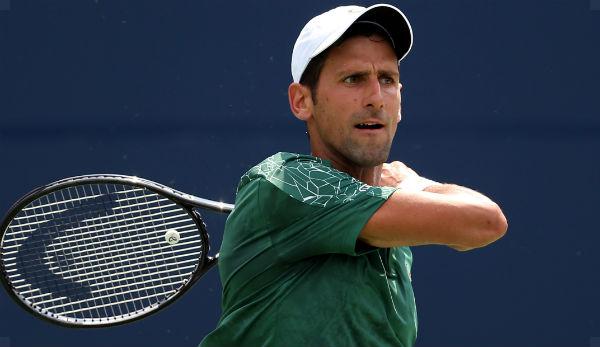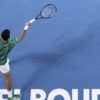Tennis
Service: Caught in the Cross Trap: How Novak Djokovic controls his opponents
Outside the court Novak Djokovic may be a joker – on the court he doesn’t understand humor and reflects the game of his opponent.
In our tennis club, the so-called handicap tournament is played every year. In this tournament, strong and slightly weaker players are mixed and sent to the field as double matches. The stronger players get handicaps. For example: Frying pan instead of racket. Or an eye patch and a balloon on the bat.
The same goes for the opponents of Novak Djokovic. They also play a handicap match against the Serbs. Especially Juan Martin del Potro in the final of the US Open. The “Tower of Tandil” was pulled into the cross trap from the first rally and could only free himself briefly in the middle of the second set by two brutal forehands and a slight mistake of the “Djoker”, and breathe fresh air. Djokovic quickly stowed away his emerging negative emotions in his box and was there when it mattered.
Djokovic is a clever boy. He always has his emotions under full control. Even when he looks like a psychopath. He always knows exactly what to do. That is in most cases: cross play. It reflects the game of the opponent. He looks like a shadow that won’t let go of his opponent. He’s not leaving, he’s always there. If del Potro played fast, the ball came back fast. If del Potro played a little slower, a slow ball came back. And just before the Argentinean was completely lulled, the Serbian’s longline ball came, mostly with the forehand. This way of playing, which Djokovic plays with absolute perfection and feels flawless for the spectator, is physically and psychologically tiring for the opponent. Anyone who played against a ball wall as a little steppke knows how Juan Martin del Potro felt yesterday.
Djokovic is not only perhaps the best counterpuncher of all time. He is also the player who has absolute control over the angles on the pitch. He never plays a “stupid” ball. He never falls into the corner trap. He never takes unnecessary risks because he is taken over by the gambling joke. But otherwise he’s a very funny guy on the court.
The areas that Novak Djokovic alludes to are similar from rally to rally. He switches wisely between the cross-game and the balls in the middle. Why does he so often play his opponent in the middle? The latter then has no angles, no spaces to play aggressively. The cross game and the position at the baseline, which is then moved a little further back, means Djokovic can hardly give his opponent any targets to play at. Even del Potro, who brings the most powerful forehand of our beloved sport to the field, could hardly use this power profitably. A few cross steps to the side, an early start – and bang. Djokovic was there and pushed back the forehand of the Argentinian cross. And the game started all over again.
del Potro had the best moments when he could play longline. Or rather: was allowed to. To be able to walk longline, del Potro needed the following requirements:
– approach the ball
– hit the ball in front of the body, ideally in the field
– great self-confidence
Djokovic almost always broke these three points through his game. In the middle of the second movement, when Djokovic once offered something, del Potro was there. But as fast as he was in the door, Djokovic sent him out again. With a little luck. Just be patient. But always with full control over his tactics. Every hobby player who wants to improve his baseline game should take a closer look at Novak Djokovic’s ball distribution on YouTube.
Hardly anyone controls the baseline as much as Novak Djokovic. It cannot be tackled at high speed. It would be very interesting to see what a player like Alex de Minaur would look like against the new US Open Champion.
The future will probably show us.













You must be logged in to post a comment Login